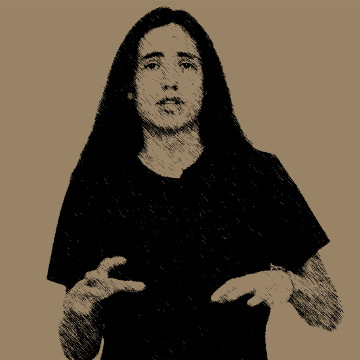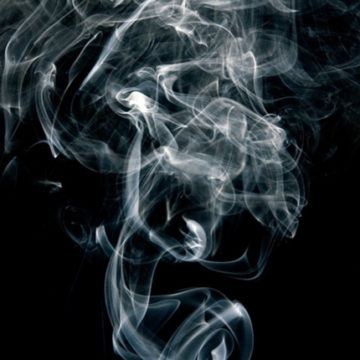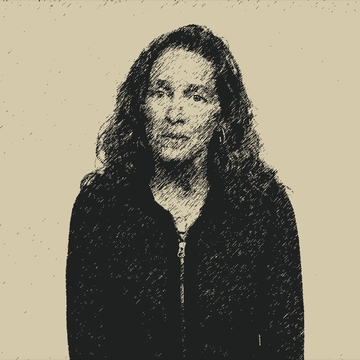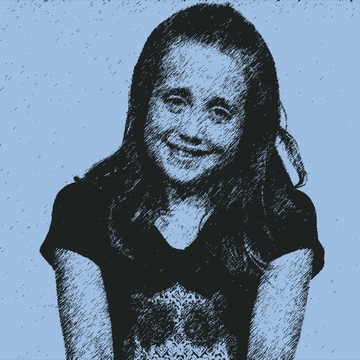Juliana v. United States: The unresolved case already making a difference
“Everybody who has lived on this planet to date has enjoyed the benefits of our climate system and future generations have a right to that too.”
—Julia Olson, Co-Founder of Our Children’s Trust and Lead Council in climate lawsuit Juliana v. United States
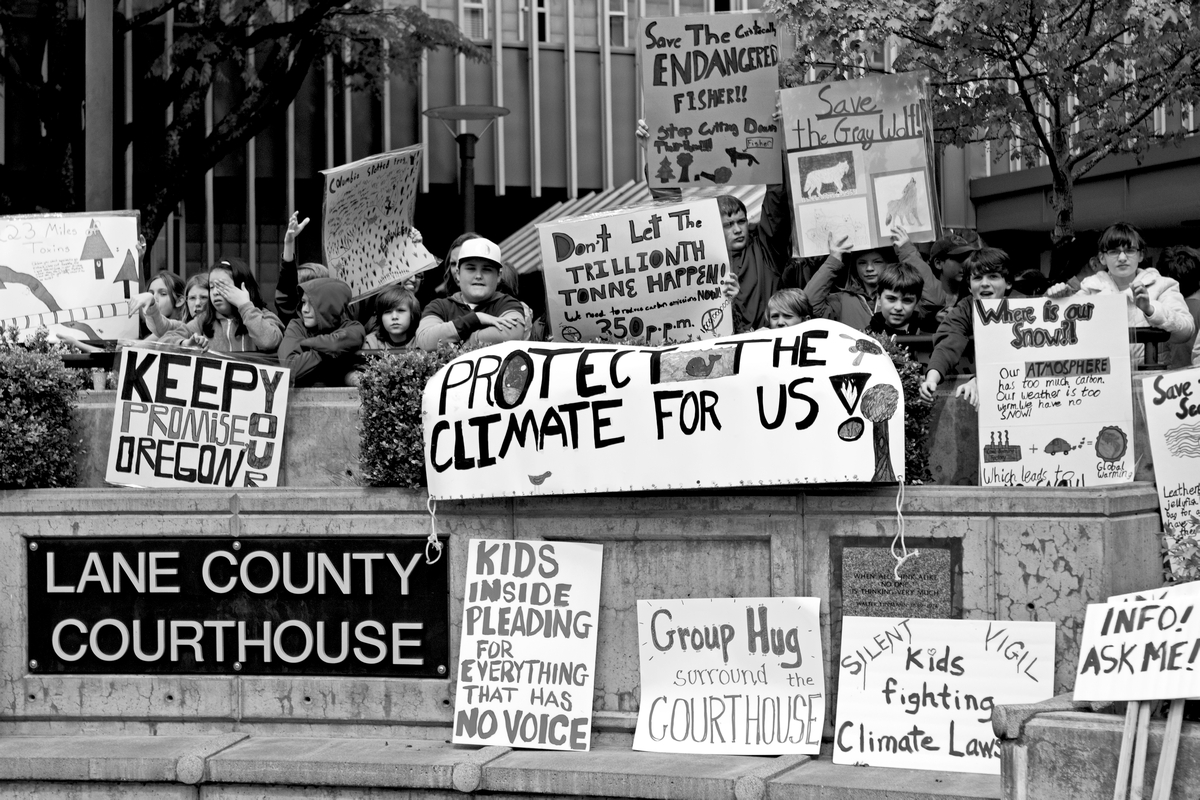
In October 2015 the Bifrost team spent some time in Eugene, Oregon as guests of the University of Oregon. This residency provided an unexpected opportunity to learn about the groundbreaking case of Juliana v. United States, then still in its earliest stages of litigation. We had a chance to interview a number of the principal actors involved in this lawsuit filed by 21 youth plaintiffs from across the United States and climate scientist James Hansen, former director of the NASA Goddard Space Center in New York. The case has since become an international cause célèbre, initially because of the landmark Paris climate agreement that was reached two months later in December 2015, which brought serious efforts to mitigate climate change into a new kind of focus. The case began to garner even more attention and interest after newly elected President Donald Trump declared in 2017 that he would pull the United States out of the Paris agreement, thereby making the U.S. the one and only country out of nearly 200 nations worldwide to abandon its commitments and obligations under the groundbreaking accord—an unprecedented achievement in international diplomacy on the environment—as reached by the Conference of the Parties (COP 21) in the United Nations Framework Convention on Climate Change (UNFCCC). Many commentators have called this David and Goliath case the trial of the century — or, as author-activists Naomi Klein has dubbed it, the “most important case on the planet right now.”
The path to trial in the Juliana v. United States lawsuit has turned out to be a long and challenging one for the youth plaintiffs and their legal team. First filed in August 2015 against the federal government under then president Barack Obama, the lawsuit alleges in effect that the United States has been negligent in preventing harm to present and future generations by ignoring or downplaying the threat of climate change in the face of mounting evidence that it was happening and worsening significantly with each passing year. Beyond this, it alleges that the United States has promoted a fossil-fuel based energy system for more than 50 years, through longstanding subsidies and other economic incentives, despite evidence and awareness of the risks and harms such a course would expose its citizens to by significantly contributing to global warming.
After facing a string of preliminary legal obstacles in the federal court system, the case was slated (in March 2018) to move forward to trial beginning 29 October 2018. However, last-minute efforts by the Trump administration’s Department of Justice (DOJ) have left this plan in doubt. On 21 October, just one week before the court trial was set to start in U.S. Federal Court in Eugene, Chief Justice John Roberts of the Supreme Court of the United States granted a temporary stay of the trial in response to the DOJ’s latest and most extraordinary petition for a writ of mandamus. This is not the first attempt by the Trump administration to derail this lawsuit. Three previous petitions for a writ of mandamus by the DOJ have attempted to dissolve the case on the basis of various other objections (the first, filed together with an amicus brief from the U.S. petroleum industry, claiming that the 21 American youth who brought the case had no legal standing to do so), but each of these has been denied by federal judges. A writ of mandamus is an appeal to a higher court to overrule a lower court before a trial concludes and a verdict is rendered. The latest such motion to the U.S. Supreme Court is the most extraordinary of them all in its claim that the U.S. federal government cannot afford the costs of discovery in the trial—against a group of youth funded mostly by small-scale private donations and in-kind support from volunteers. The Juliana v. United States lawsuit has been prepared by lead council Julia Olson, co-founder of the Eugene, Oregon-based non-profit organization Our Children’s Trust. A number of dedicated lawyers and expert witnesses have also donated their time and expertise.
The string of motions and last-ditch petitions by the Department of Justice (DOJ) to deny these youth and North America’s best-known climate scientist their day in court are extraordinary facts in and of themselves. Lay people may be apt to think that the Supreme Court functions as a final appellate body to test the constitutional legality of trial judgments from lower federal courts. It’s hardly surprising that this would be the general understanding, because the court is best known for doing just that. However, legal questions or motions for a ruling can proceed expeditiously beyond lower courts to be addressed and ultimately settled by the Supreme Court under pressing circumstances when the customary time required for filing of motions, discovery, and other court preparations may jeopardize a petitioner’s rights. None of these special circumstances seems to fit the present motion. The dubious claim of the government’s potential economic hardship offered by the Trump administration after marshalling through 1.5 trillion dollars in tax breaks to corporations and the very wealthiest Americans during the past year smacks of the same Orwellian rebranding of reality that has become this administration’s signature move since it inaugurated the concept of “alternative facts” in tandem with President Trump’s own inauguration in January 2017. It’s incredible to see just how far the mightiest forces in the most powerful country in the world will go to try and deny the rights of 21 young people armed with courage, conviction & the authority of science & facts. This is now also a fight for the soul of justice in America.
One fact that is worth bearing in mind about Juliana v. United States is that the lawsuit seeks not a monetary award for damages for the plaintiffs, but a court-ordered climate recovery plan that the Federal Government would be ordered to put in place to redress the damage being done to the life, liberty and property of today’s youth and tomorrow’s citizenry. Such harm follows from the government’s refusal to act on the evidence well established by the scientific community (including the fossil fuel industry’s own scientists) not only that climate change is happening, but that it is driven by global warming, and this warming itself is human-caused — the result of escalating levels of carbon dioxide and other greenhouse gas emissions into the atmosphere.
The #Resist theme of Bifrost Online running during fall 2018 comes with a special case study (our first) focused on a number of remarkable experiences and testimonials that come together in the story of this case, beginning of course with the lawsuit itself — Juliana v. United States. However, the case study also looks to the academic (scientific and theoretical) contributions on which the case is based, the activist culture of the small Northwestern American town that helped propel the lawsuit into the public spotlight, and the decisive step from theoretical to practical law that found powerful expression in the establishment of Our Children’s Trust. This small non-profit organization not only did most of the heavy lifting to set the lawsuit in motion — it has also inspired, guided and catalyzed similar cases all over the world that bear the seeds of climate revolution.
Eugene, Oregon’s grassroots social activism and community engagement offered very fertile ground in which this case has flourished. The feature article by Eugene author, educator and arts-activist Mary DeMocker in the #Resist theme of Bifrost Online provides a rich account of that local activist context. DeMocker details how engagement from some of the least politically influential members of the city — children and youth from Eugene’s primary and secondary-schools — helped heighten public awareness of the case beyond the local to the national level and in turn helped to build a community of purpose that has seen its own string of successes fighting climate change and other cases of environmental injustice.
At the same time the contributions of a local law professor and legal theorist at the University of Oregon, Mary Wood, proved to be both theoretically essential and instrumentally valuable to the case’s origins and forward development. It was Wood who innovated the atmospheric trust litigation approach anchoring the case, an application of the public trust doctrine that has been a well-established principle in Western law since the times of the Roman emperor Justinian; she also turned to climate scientist James Hansen and his networks for help in establishing a sound scientific basis for the prescription of 350 parts-per-million as a ceiling boundary for C02 concentration in the atmosphere to ensure sustainable human health and ecological resilience (Dr. Hansen would eventually become a co-plaintiff in the case, representing future generations). By articulating the importance of this atmospheric threshold as a measuring point against which assessments of human flourishing or possible harm could be understood, identified and anticipated (as backed by extensive scientific study), Hansen and others from the climate science community provided legal scholar Mary Wood with what she has dubbed the key “prescription” necessary for her legal strategy to be viable. This threshold of safe operations within the earth system can guide judges and government agencies alike in determining the scale and even the likelihood of future threats or potential hazards if decisive efforts are not undertaken to recover a climate system disrupted by unsustainable greenhouse gas emissions.
Mary Wood has also played the role of a key advisor to Julia Olson, the lead council on the Juliana v. United States lawsuit and co-founder of Our Children’s Trust. It is Wood’s groundbreaking theoretical work that Olson and Our Children’s Trust are putting to the test in the high-profile Juliana case as well as in numerous others around the world based on the same principles of atmospheric trust litigation. Like her colleague climatologist James Hansen, Wood epitomizes creativity, moral vision, determination and political courage, and has drawn on each of these qualities to find ways of making a difference on arguably the greatest challenge facing humanity in this century, proving that social commitment and academic rigor are not incompatible or self-cancelling traits in the same person.
Last but certainly not least are the youth plaintiffs themselves, who have managed to attract the imagination and the sympathies of the general public. They have earned the respect of powerful new allies and the trepidation of fossil-fuel corporations and their political cronies. The carbon-polluting industry more responsible than any other group or sector for the volatile state of the earth system in the 21st century has every reason to be terrified of them — for in those young lives just now beginning to unfold, with a growing sense of their own agency and power, the old guard ideology of boom and bust exploitation is already an obsolete afterthought.
So many distinct threads actually make up the narrative tapestry of Juliana v. United States. Bifrost Online’s case study encompasses a short film, two features articles, several full interview transcripts and shorter video insight testimonials from key figures at the center of this lawsuit. Together these intersecting voices help to document the story of how a private concern became a local cause, how that cause became a cultural touchstone that has flourished into an international movement with the potential for revolutionary change.
As a case study in the building of a community of purpose, the story of this now internationally prominent initiative — linking youth and their schools, their parents and neighbors, local activists and non-profit organizations, scientists and legal scholars and practicing lawyers — also has the potential to open up new horizons of engagement for research and educational communities such as the Humanities for the Environment network of global observatories. As a case study in social-ecological interdependency, civics and the integrated networked actions of communities, government institutions and civil society, the story behind this case offers lessons that students and seasoned researchers alike can take away with profit. Helping to bring such cases to light for the general public, while developing new media and other narrative materials that can aid contextual learning in a variety of settings, is a major reason why Bifrost was established.

